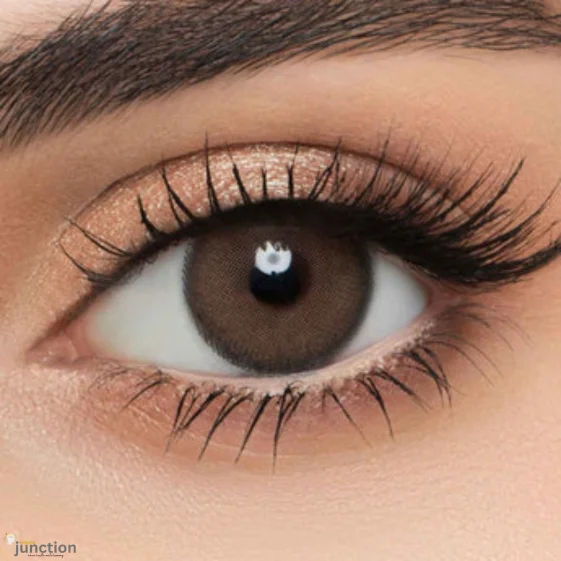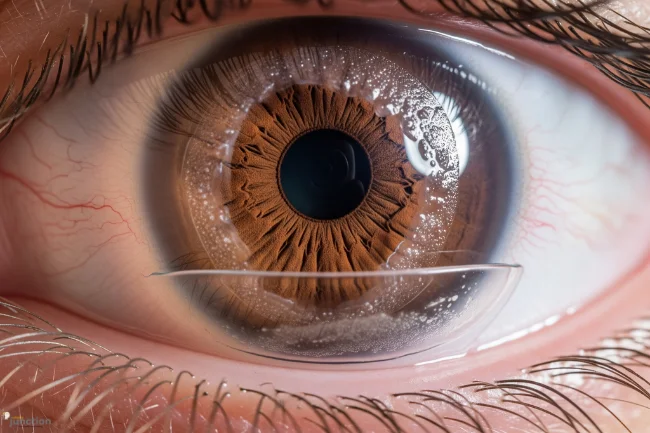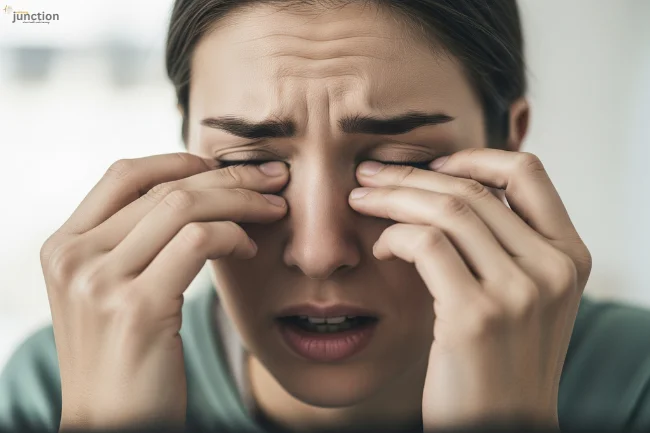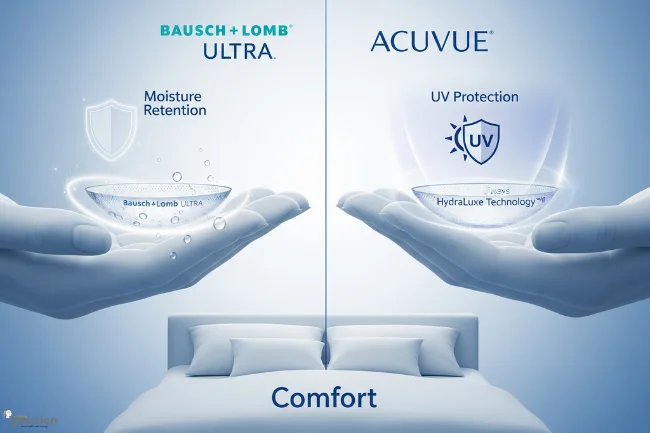Have you ever noticed that your eyes feel dry, itchy, or tired after a long day of screen use while wearing a contact lens? If so, you’re not alone, and there’s a surprising reason behind it: you might not be blinking enough. It’s something many people overlook, but blinking plays a huge role in how your contact lenses feel throughout the day.
While contact lenses offer clear vision and freedom from glasses, they also change the way your eyes interact with their environment. One of the most noticeable changes is how it impacts your natural blinking patterns. Let’s explore why this matters and how choosing the right lenses, such as Bausch and Lomb Ultra in the UAE, can make a real difference.
Blinking: A Natural But Often Forgotten Function
Blinking isn’t just a reflex. Blinking evenly spreads tears across your eye to keep it moist. This tear film keeps your eyes hydrated, flushes out tiny particles, and provides nutrients to the cornea. For contact lens users, blinking is especially important because it also helps keep the lens clean, moist, and comfortable.
Many people tend to blink less frequently when concentrating, particularly during screen usage. Whether it’s a phone, tablet, laptop, or television, digital devices tend to reduce blink rate significantly. Some studies show people blink up to 60% less while using screens.
Why Contact Lens Wearers Are More Affected
When you wear contact lenses, your contact lens disrupts your eye’s natural tear film. The lens sits between the tear layer and your eyelid, changing the way moisture spreads across the eye. If you blink less, tears don’t spread properly, and the contact lens surface can dry out quickly. This leads to symptoms like dryness, blurry vision, redness, and fatigue.
This is especially common in office environments or in dry climates like the UAE, where air conditioning and long hours at a desk are typical. That’s why solutions like Bausch and Lomb Ultra in the UAE are becoming increasingly popular; they’re designed to work better under these demanding conditions.
How Modern Lens Helps with Reduced Blinking
Not all contact lens are made the same, and newer materials are helping to solve the blinking issue. Some lenses are specifically created for people who use digital devices heavily and blink less as a result.
For example, Bausch and Lomb Ultra in the UAE are designed using MoistureSeal® technology. This helps the lens retain nearly 95% of its moisture for up to 16 hours. It also provides more flexibility and breathability, which reduces the dry, tight feeling that often comes with decreased blinking.
On the other hand, contact lenses by Acuvue offer similar comfort-focused features. Some Acuvue lenses come with built-in wetting agents and UV protection, and they’re designed to maintain hydration even when your eyes are under digital strain. This helps reduce the need for frequent blinking or eye drops throughout the day.
The Science Behind Less Blinking in Contact Lens Wearers
When your brain is highly focused, especially during tasks like reading, gaming, or working on spreadsheets, it sends fewer signals to blink. This is called “visual attention blink suppression.” Your mind is so concentrated that your body prioritizes focus over regular blinking. It’s not something you can control completely, but being aware of it can help you take action.
For contact lens wearers, this can mean longer periods without adequate moisture replenishment. If you’re using lenses that dry out easily or aren’t designed for extended screen time, this becomes a noticeable problem.
Real-Life Signs Your Contact Lens Isn’t Getting Enough Blinking
You may not realize you’re blinking less, but your eyes will definitely feel the effects, especially when wearing contact lenses. One of the most common signs is a gritty or sandy sensation, as if something is stuck in your eye. You might also notice redness, particularly in the whites of your eyes, which can indicate irritation or dryness caused by your contact lens.
Trouble focusing or maintaining clear vision is another frequent issue, often caused by an unstable tear film. Some people find themselves needing to blink repeatedly just to clear up their vision. In more severe cases, you may experience a burning or stinging feeling, especially after long sessions in front of a screen.
All of these symptoms are signals that your eyes are not getting the moisture they need due to reduced blinking. If you experience any of these regularly, you may be dealing with “digital eye strain,” made worse by reduced blinking and lens dehydration.
What You Can Do to Blink More
While you can’t eliminate screen time altogether, there are simple steps you can take to blink more and reduce discomfort:
1- Follow the 20-20-20 Rule
To reduce eye fatigue, take a 20-second break every 20 minutes and look at something 20 feet away, encouraging natural blinking.
2- Remind Yourself to Blink
During screen time, blinking often decreases. Make a conscious effort to blink more to keep your eyes moist and lenses comfortable.
3- Adjust Your Screen Position
Keep your screen at or slightly below eye level to promote natural, complete blinks and reduce dryness.
4- Use a Humidifier
Adding moisture to the air with a humidifier helps prevent your eyes from drying out, especially in air-conditioned or heated rooms.
5- Stay Hydrated
Drinking plenty of water supports healthy tear production and helps maintain overall eye moisture throughout the day.
Even small changes in your habits can help improve blink rate and keep your contact lenses more comfortable.
Choosing the Right Contact Lens Makes a Difference
If you’re someone who spends hours a day looking at digital screens, or you live in a dry, hot climate like the UAE, your contact lens choice matters. Products like Bausch and Lomb Ultra in the UAE are made with the modern lifestyle in mind. They are specifically created for long wear, digital focus, and dryness prevention. The lenses help maintain moisture, even when you’re not blinking as often as you should.
Contact lenses by Acuvue are also widely recommended for their comfort and performance. Acuvue’s range includes daily and two-week lenses that focus on hydration and UV protection, making them a reliable option for people experiencing blinking-related discomfort.
When to See an Eye Care Professional
If you’ve tried to adjust your blinking habits and still feel persistent dryness or eye strain, it’s important to talk to an optometrist. They can evaluate your tear film, check for underlying dry eye conditions, and recommend a lens that suits your environment and lifestyle.
In many cases, switching to a newer lens material or even just using a different wearing schedule can solve the problem. Your doctor may also suggest using lubricating drops or adjusting your screen setup to help improve eye comfort.
Conclusion for Contact Lens Users
Blinking may seem like a small thing, but for contact lens users, it plays a big role in eye health and daily comfort. The combination of digital lifestyles and reduced blinking has created a common but often overlooked problem: dry, irritated eyes. Fortunately, with awareness and the right lenses, this is something you can manage easily.
Whether you choose Bausch and Lomb Ultra in the UAE for its long-lasting moisture retention, or contact lenses by Acuvue for their gentle and hydrating design, you have options that can make your contact lens experience much more comfortable, even when you forget to blink.

I’m Salman Khayam, founder of Wellbeing Junction. I synthesize trusted information from research and expert guidance to create clear articles across health, wellness, and lifestyle topics.
Disclaimer: Content is for informational purposes only and is not medical advice. Consult a qualified expert regarding personal health or specialized questions.





